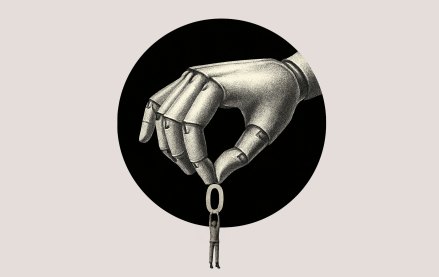Save 50% on a 3-month Digiday+ membership. Ends Dec 5.

In corporate boardrooms and on the sidelines of industry conferences, marketers are considering how best to respond to President Donald Trump’s tariffs. It’s become the key question facing them this year.
Marketers’ collective wisdom, gleaned from past recessions, pandemics and near misses, will tell them that advertisers that stick with their message — and continue to invest in their brand — are able to reap the benefits when the crunch eases. Market volatility rarely lasts long, after all.
Some advertisers, from B2B brands like PwC to automakers such as Hyundai, are holding the line and pushing ahead with marketing activity. Others, like low-cost Chinese clothing brands, are clearly pulling back.
With that in mind, it’s worth recapping the arguments weighing on each side of the scales.
The case for holding back ad spend
“Uncertainty creates a pensive and anxious consumer,” noted Colgate-Palmolive CEO Noel Wallace during the company’s recent first-quarter earnings call. In an ordinary recession, declining consumer sentiment alone might be enough to spook a brand into retreat.
But current circumstances are decidedly un-ordinary. And from the perspective of a finance executive tasked with avoiding price increases, there’s little use in investing in marketing when the wind is blowing against you.
“There’s going to be a lot of studies put out, and references to old studies, that [a] recession isn’t a good time to stop advertising,” eMarketer’s Ross Benes previously told Digiday. “The reality is that a CFO doesn’t give a shit.”
This week, we had evidence that brands beyond the U.S. market were looking to trim their sails. Global research outfit WARC and the Advertising Association this week (April 30) cut their U.K. ad spend forecast 0.6%, while a recent survey of British marketers by the Institute of Practitioners in Advertising (IPA) found 24.2% said their budgets had been reduced.
But the current crisis isn’t just one of depressed consumer spending or indirect economic effects. There’s rising supply costs and squeezed margins to deal with — tangible problems with dollar signs next to them.
“You don’t want to advertise something you can’t supply,” Ruben Schreurs, Ebiquity CEO, told Digiday earlier this week. “At the same time, suspending all advertising has an impact on your brand equity … it’s an incredibly complicated balancing act.”
The companies with supply chains directly in the line of fire — whether they’re Chinese e-commerce retailers, alcohol brands importing Mexican tequila, or automotive firms — are not waiting around. They’re freezing activity, turning off the taps that can twist quickly, and postponing major campaigns. Notably, Temu and Shein drastically cut their digital spending at the beginning of April, marking a notable retreat from an advertising market they’d had an outsized effect on in recent years.
Full-service agency EGC, for example, works with several alcohol brands including Blue Point Brewing Company and beermaker Captain Lawrence. “A lot of those clients are almost frozen in place from a strategic decision-making standpoint,” said president and CEO Nicole Penn. “There’s an eye to shore up cash and get ready for what they feel is going to be a summer slump,” she added, without naming specific clients.
The case against holding back ad spend
Conditions are far from ideal for most advertisers right now. But companies that pull back might be sacrificing ground to competitors in the short-term and commercial growth in the long term. “There’s less focus on building something that’s enduring,” said Anne-Marie Rosser, CEO of agency VSA Partners. “Contraction on investing in brand is actually going to hurt a lot of these companies.”
After all, not every brand carries the same exposure to tariff-related impacts on supply costs or availability. Just because one firm’s production costs are set to rise, doesn’t mean their close rivals necessarily share the same fate.
And in that scenario, a strong brand comes into its own as a business asset. “It’s an emotional time, and brand is something that delivers emotion about function. And so people are going to turn to that. They’re going to turn to brands that they trust, that they feel are reliable, and they may even be willing to pay a premium for,” said Rosser.
Major advertisers appear to be heeding that message, according to holdco chiefs. Interpubic Group boss Philippe Krakowsky told analysts that client media spend has not been dented by tariff concerns.
And Publicis Groupe leader Arthur Sadoun said: “We are confident that our clients will be cautious, but will continue to invest … We know that clients are going to continue to spend, because they have to spend and maintain their market share. You need identity to find new [sources] of growth, and our clients are not going to stop looking for [sources] of growth.”
More in Marketing

In Graphic Detail: Here’s what the creator economy is expected to look like in 2026
Digiday has charted its expected revenue, key platforms for creator content as well as what types of creators brands want to work with.

Ulta, Best Buy and Adidas dominate AI holiday shopping mentions
The brands that are seeing the biggest boost from this shift in consumer behavior are some of the biggest retailers.

Future of Marketing Briefing: AI confuses marketers but their own uncertainty runs deeper
That was the undercurrent at this week’s Digiday Programmatic Marketing Summit in New Orleans.







